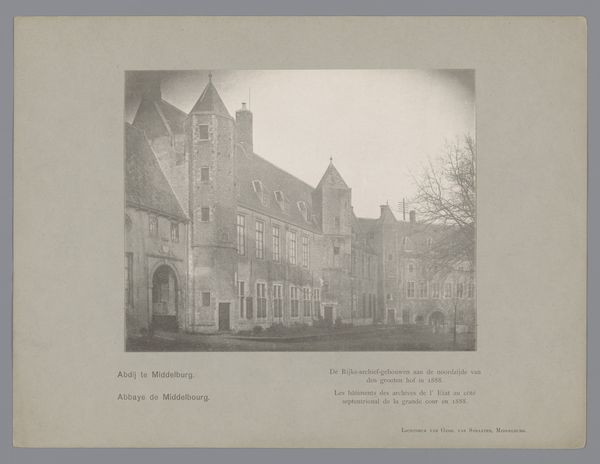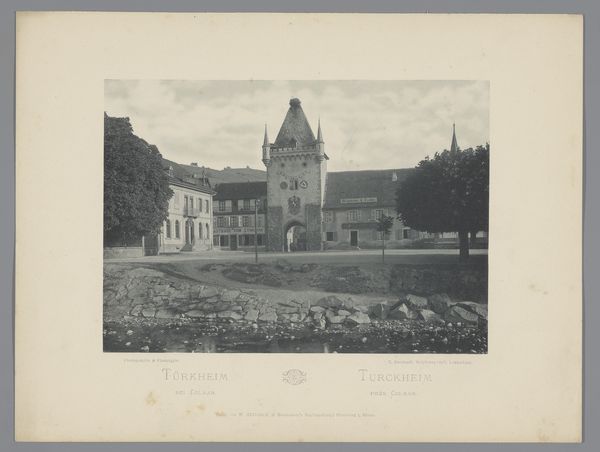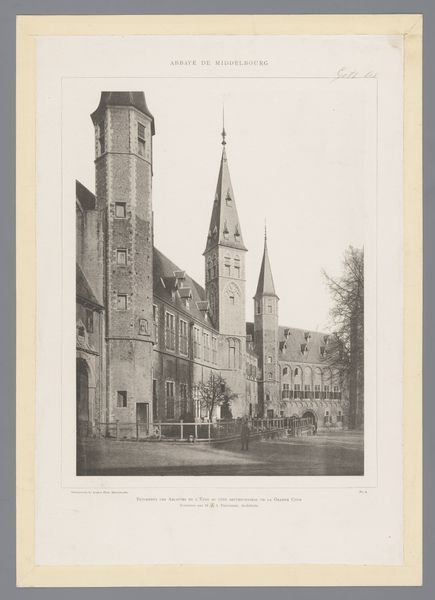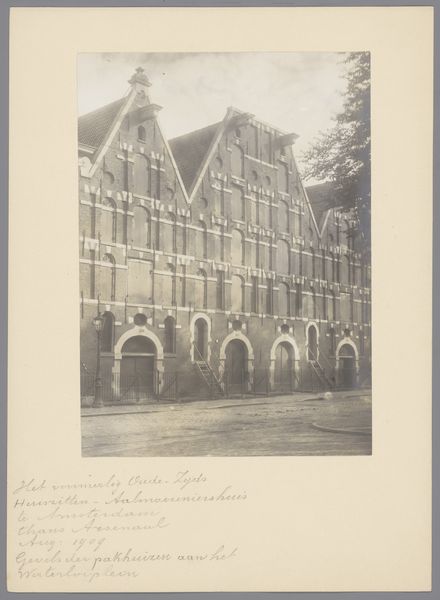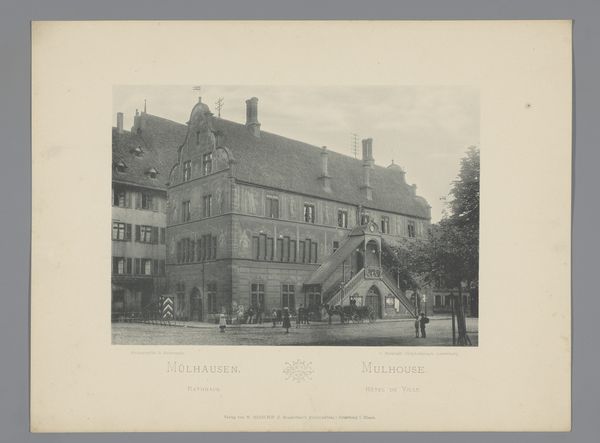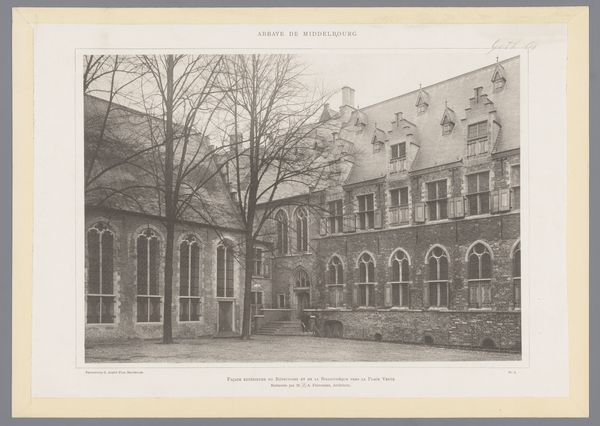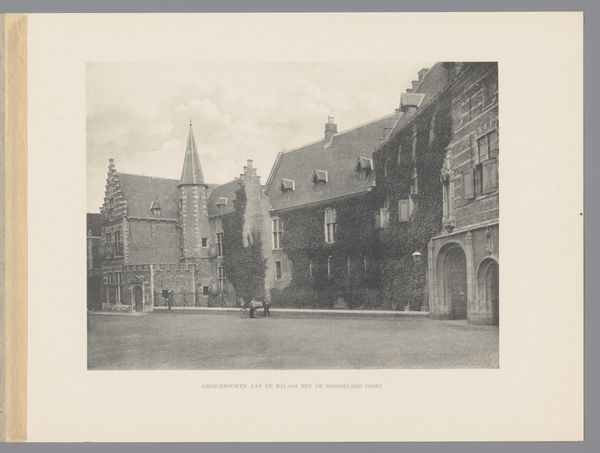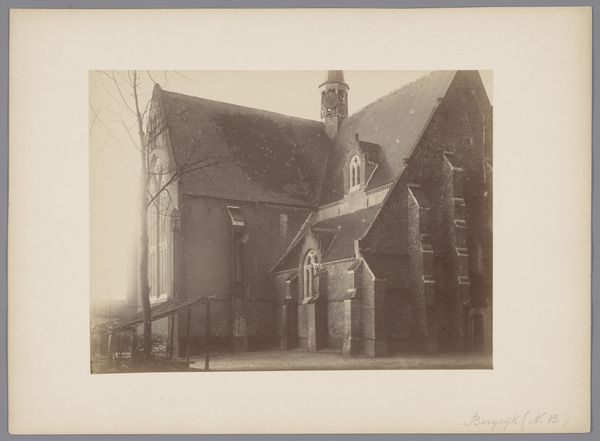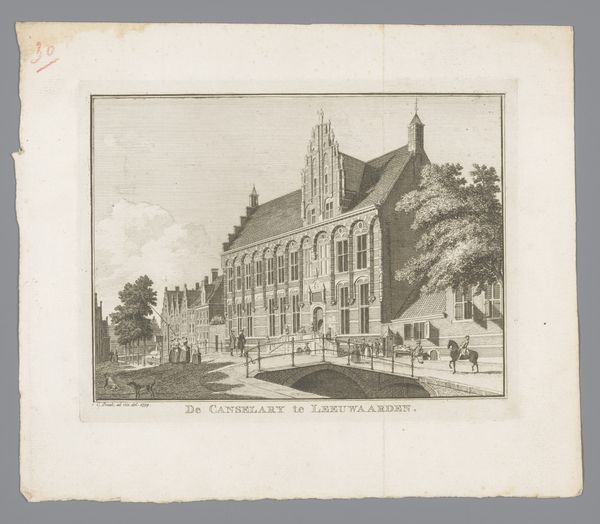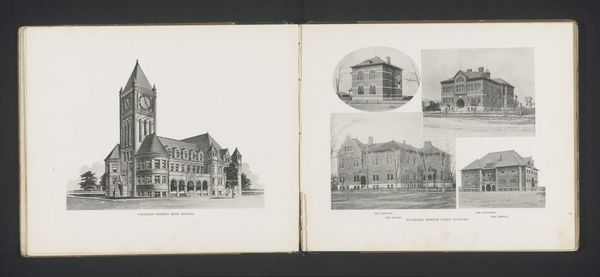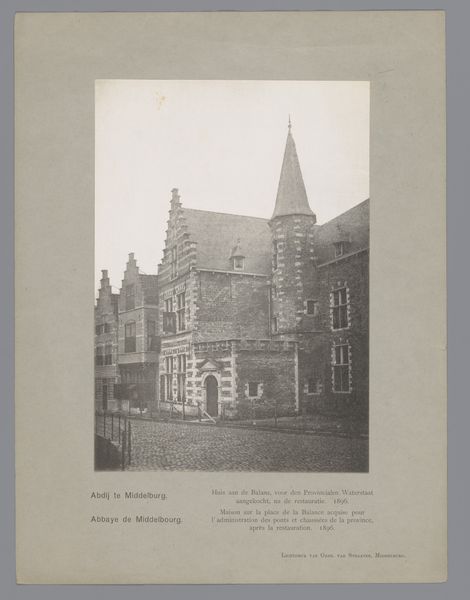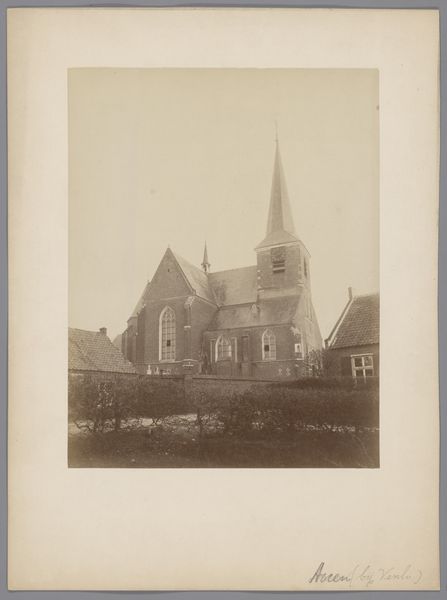
print, paper, architecture
#
aged paper
#
homemade paper
#
light colour palette
#
paper non-digital material
#
pale palette
#
reduced colour palette
# print
#
light coloured
#
landscape
#
white palette
#
paper
#
cityscape
#
paper medium
#
soft colour palette
#
architecture
Dimensions: height 322 mm, width 450 mm
Copyright: Rijks Museum: Open Domain
Editor: So, here we have "Twee gezichten op delen van de Abdij van Middelburg," or "Two Views of Parts of the Abbey of Middelburg," a print by C. Aubry Fils, created sometime after 1906. The use of paper really lends itself to the aged quality of the piece. I’m struck by how these architectural forms appear both grounded and slightly ethereal. What layers of meaning do you find in this composition? Curator: Well, first observe the diptych format; the doubling acts as a visual echo. It begs the question: What aspects of the Abbey does the artist deem worthy of this mirrored presentation? Is it purely aesthetic, or does it point towards a deeper symbolic symmetry, perhaps the twin pillars of faith and governance that the Abbey embodies? Notice how in one view, the building rises sharply; in the other, it hides somewhat within a stand of trees. Do these contrasting settings change how you interpret the abbey’s presence? Editor: That’s a great observation. The Abbey almost seems to be asserting itself in one view, while quietly observing in the other. So much about the relationship between nature and structure. Curator: Exactly. The visual language here whispers of permanence and transformation. These are heavy structures presented in a pale, almost faded palette, making us contemplate the Abbey's endurance but also its vulnerability to time. How do you think that reduced palette affects our sense of history and memory here? Editor: It feels like a gentle fade, like the slow washing away of vivid details, leaving us with a sketch of the past that prompts you to reflect and appreciate, despite all its ambiguity and contradictions. Curator: I agree. Ultimately, this artwork becomes more than just a representation of a place; it's a subtle meditation on history and visual heritage. Editor: I've never thought about the diptych format that way, especially considering cultural memory and its vulnerability over time.
Comments
No comments
Be the first to comment and join the conversation on the ultimate creative platform.
